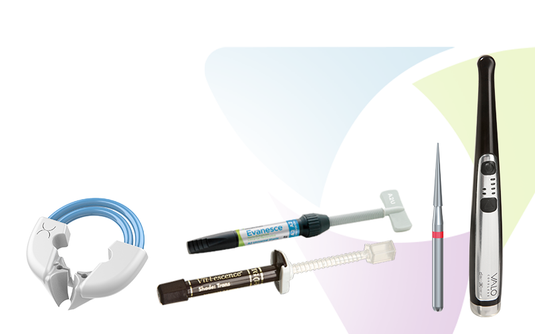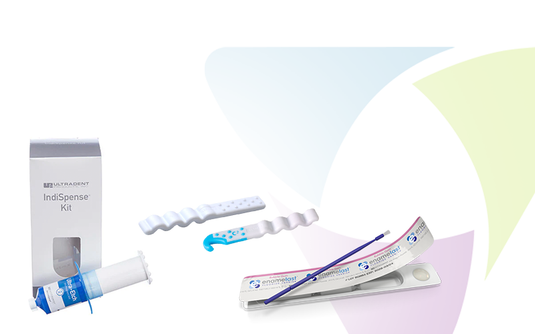
Desensitization Protocol for Crowns Using G5
Composition and Efficacy
G5™ All-Purpose Desensitizer is a time and research proven desensitizer that works to prevent post-op sensitivity when placed under virtually any type of dental restoration. Based historically on the formulation of a dentin primer, G5 contains 5% glutaraldehyde, 35% HEMA, and water: a simple but highly effective composition.
How does G5 work?
1. G5 is bactericidal owing to the glutaraldehyde. Like chlorhexidine and other cavity disinfectants, it kills the “bugs.”
2. Unlike most cavity disinfectants and desensitizers, G5 forms a series of “coagulation plugs” in the dentinal tubules, thereby reducing dentin permeability and fluid flow, critical keys to desensitization (based on Brännström’s Hydrodynamic Theory of Dental Pain). G5 does so by coagulating the plasma proteins (serum albumin) in the dentinal tubules.
3. G5 is a very effective cross-linking agent (flocculant) that toughens the collagen to which dental primers bond through hybrid layer formation.
4. G5 also has been shown to effectively resist the adverse effects of MMPs, proteolytic enzymes that if activated can deteriorate the dentin/resin bond.
It should be pointed out that G5 does not adversely effect bond strengths of any resin bonding agent or of any cement. It is unique among desensitizers in this regard.
FIG. 1
G5 Application - Apply sparingly to avoid soft tissue contact, scrub on preparation for full 20-30 seconds.
FIG. 2
Damp blot or lightly rinse excess G5, damp blotting will prevent soft tissue contact.
Clinical Protocol
Prior to crown cementation, remove the resin temporary crown and clean the preparation of residual cement and debris.
Using a microbrush, apply G5 sparingly, using a scrubbing action on all surfaces of the tooth preparation for approximately 30 seconds. This approach allows time for the G5 to disinfect the surface and to penetrate the smear layer in order to saturate the dentinal tubules for optimal sealing and desensitization.
Your custom text goes hereAfter application, rinse the residual G5 from both the tooth and the surrounding soft tissues with a stream of water for 5 seconds.
Maintaining optimal isolation, cement the crown per the instructions for the specific cement.
Vers. 11-28-20
About the Author
Harald O. Heymann, DDS, MEd
Dr. Heymann has been particularly active in the clinical research of esthetic restorative materials and is the author of over 200 scientific publications.
He is a member of the Academy of Operative Dentistry, the International Association of Dental Research, and is Past-President and a Fellow of the American Academy of Esthetic Dentistry. He is also a Fellow in the International College of Dentists, the American College of Dentists, and the Academy of Dental Materials. He also serves as a consultant to the ADA.
Discover More
This article was originally published in the Clinical Life™ magazine: Winter 2021 edition
Clinical Life™ magazine is a premier periodical publication by Clinical Research Dental Supplies & Services Inc. Discover compelling clinical cases from Canadian and US dental professionals, cutting-edge techniques, product insights, and continuing education events.













